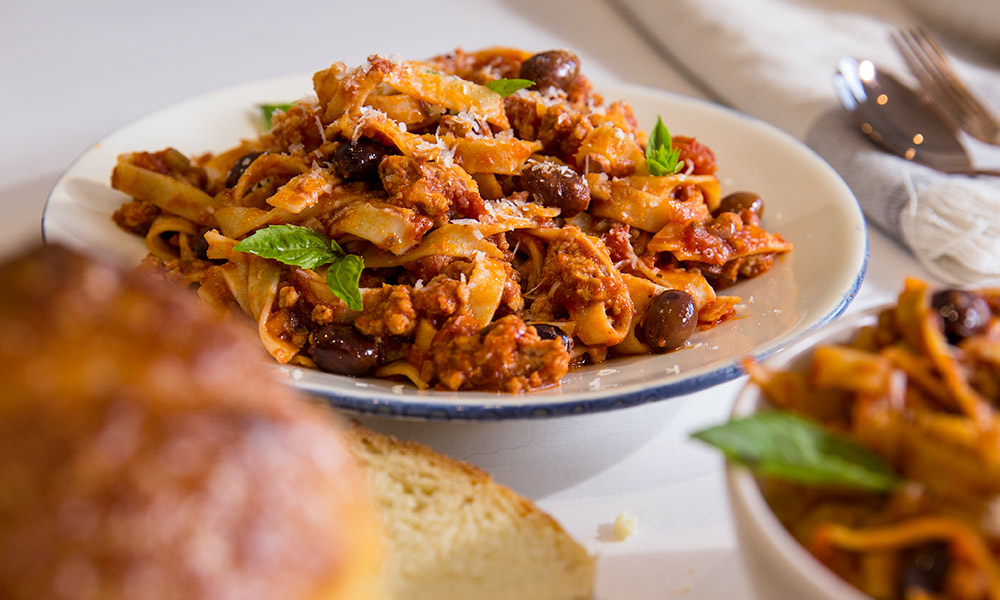A pasta dinner requires a simple formula. Water, pasta, pasta sauce and you’re good to go, right? Actually, you might be surprised to hear that there’s a little more to it than that and that you might be doing it all wrong. Fear not, we have a few pointers to help you refine your pasta-making process so you can achieve the perfect bowl of pasta.
Choose Your Noodles
The perfect pasta dish starts with the right combination of pasta noodle and pasta sauce. With over 300 pasta shapes and countless sauces, it’s natural to feel a little lost. This is a good time to sharpen your pasta knowledge and learn about how to pair pasta noodles and sauces, along with the history of pasta, in our Pasta 101 guide. It’s also a good time to pick up some Authentica pasta sauces, which are convenient and versatile.
Measure Twice, Cook Once
OK, maybe this is an exaggeration but it’s important to get the right amount of pasta so you’re not scrambling to cook another batch or throwing out noodles. Afterall, pasta noodles are really not great after they’ve been refrigerated and reheated. If you’re not sure about how much dried pasta to cook use the following guidelines:
1 cup dried pasta (macaroni, shells, rotini, penne, etc.) = 2 ½ cups cooked pasta
1-inch diameter bunch of dry pasta (spaghetti, fettuccine, linguine, etc.) = 2 cups cooked pasta
Salty Like the Sea
It’s important to cook pasta in a large pot with plenty of water to prevent the noodles from sticking together and cooking unevenly. It’s also essential to season the water with plenty of salt. Without it, your pasta will taste flat no matter how flavourful your pasta sauce. In general, you should add 2 tablespoons of salt for every 4 litres of water for perfectly seasoned pasta. If you don’t feel like measuring, aim to make your pasta water as salty as seawater.
Stir and Drain
Be sure to stir your pasta occasionally while it’s boiling to keep it from clumping together and refer to the package instructions for cooking time. Once the pasta is al dente, drain it without it drying it out. In other words, drain the water but don’t leave your pasta sitting in the strainer. While you’re at it, make sure you reserve a bit of the pasta water, which you’ll need to properly finish your dish.
Pasta Goes in the Pasta Sauce, Not the Other Way Around
Many cooks will plate their pasta and make a nest for pasta sauce. However, to get the best flavour from any pasta sauce, it’s essential to finish it right by adding the pasta to the sauce along with a bit of pasta water. The starchy water will thin the sauce to the perfect consistency and help it stick to the pasta noodles. Simmer all of this together and finish it off with some cheese off the heat.
Tight-on-time Dinner Recipes
See all Recipes



Showing 0 reviews
Thanks for submitting your comment!